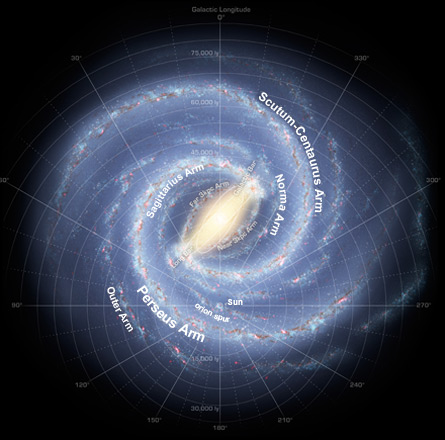MIAMI — Astronomers have discovered about 450 hidden stellar nurseries in the Milky Way where behemoth stars many times bigger than the sun are being born. These spots could be used as markers to map in unprecedented detail the structure of the galaxy’s trademark feature: its spiral arms.
The discovery doubles the number of known sites in the northern reaches of the galaxy where massive stars are born, said Tom Bania of Boston University. He estimated that there could be another 4,000 or so fainter massive-star birth regions awaiting discovery throughout the galaxy.
Bania and Loren Anderson of the Astrophysical Laboratory of Marseille in France discussed their team’s findings May 26 at a meeting of the American Astronomical Society.
Locating regions that form massive stars is like “putting pins on a map” to reveal the full structure of the Milky Way’s spiral arms, comments Patrick Thaddeus of the Harvard-Smithsonian Center for Astrophysics in Cambridge, Mass. Gas and dust make the regions impossible to see in visible light, so astronomers have to resort to other wavelengths to trace them out.
The researchers inferred the existence of the star birth sites by observing them in both infrared and radio wavelengths using NASA’s Spitzer Space Telescope and ground-based observatories in West Virginia and New Mexico. That combination of observations was able to detect the effects on surrounding hydrogen gas of the intense ultraviolet light emitted by newborn massive stars.
The newfound regions could provide new information about the chemical composition and evolution of the galaxy. Massive stars are likely to die in supernova explosions, spilling their guts and seeding nearby regions of space with the material needed to make a greater variety of celestial objects, including planets.
Even if a large number of massive-star birth regions are found, it’s unclear whether they would make a significant contribution to the Milky Way’s overall star-formation rate, estimated to be the equivalent of five to ten suns a year, Bania said. That’s because behemoth stars, weighing as much as many suns, are rare beasts in the galaxy.








